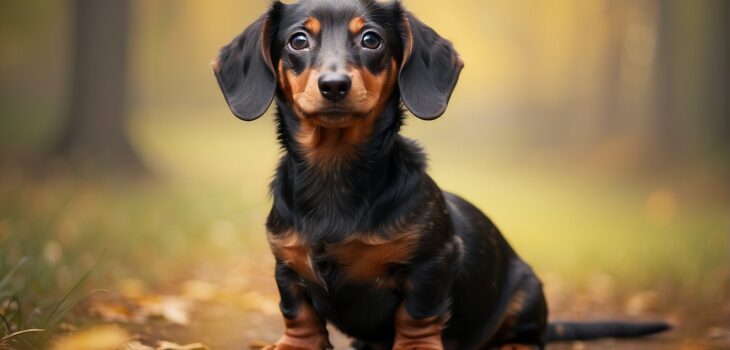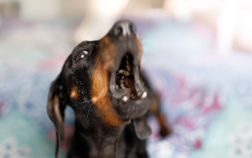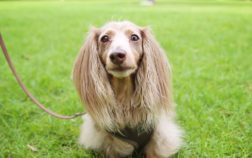Last Updated on April 14, 2024 by admin
You’ve probably seen them waddling down the street, their small legs and elongated bodies making them easily recognizable. But have you ever wondered what exactly the meaning behind the adorable dachshund breeds is? These unique dogs have a rich history and a name that carries a deeper significance. In this article, we will explore the origins and symbolism behind the dachshund name, shedding light on the true meaning of these beloved breeds. So, sit back, relax, and embark on a fascinating journey into the world of dachshunds.
History of Dachshund Breeds
The history of Dachshund breeds is both fascinating and rich. Originating from Germany, these unique and spirited dogs have a long-standing reputation for their hunting abilities and remarkable characteristics. Let’s delve into the captivating journey of Dachshund breeds throughout history.
Origin of Dachshund Breeds
Dachshunds, commonly referred to as “Badger Dogs” in German, have a name that perfectly represents their purpose and origin. “Dachs” translates to badger, while “hund” means dog. Bred in the early 17th century, Dachshunds were developed specifically to hunt and track badgers. Their distinctive elongated body and short legs allowed them to maneuver through underground tunnels and flush out game with remarkable efficiency.
Significance of Dachshund Breeds in Germany
Dachshunds hold a special place in German culture and traditions. Known as Germany’s “National Dog,” they are immensely cherished and highly regarded for their unwavering dedication and hunting prowess. Their tenacity and fearlessness in the face of formidable adversaries, such as badgers, exemplify the German spirit and determination. Dachshunds have become symbols of national pride and are often associated with loyalty, courage, and resilience.
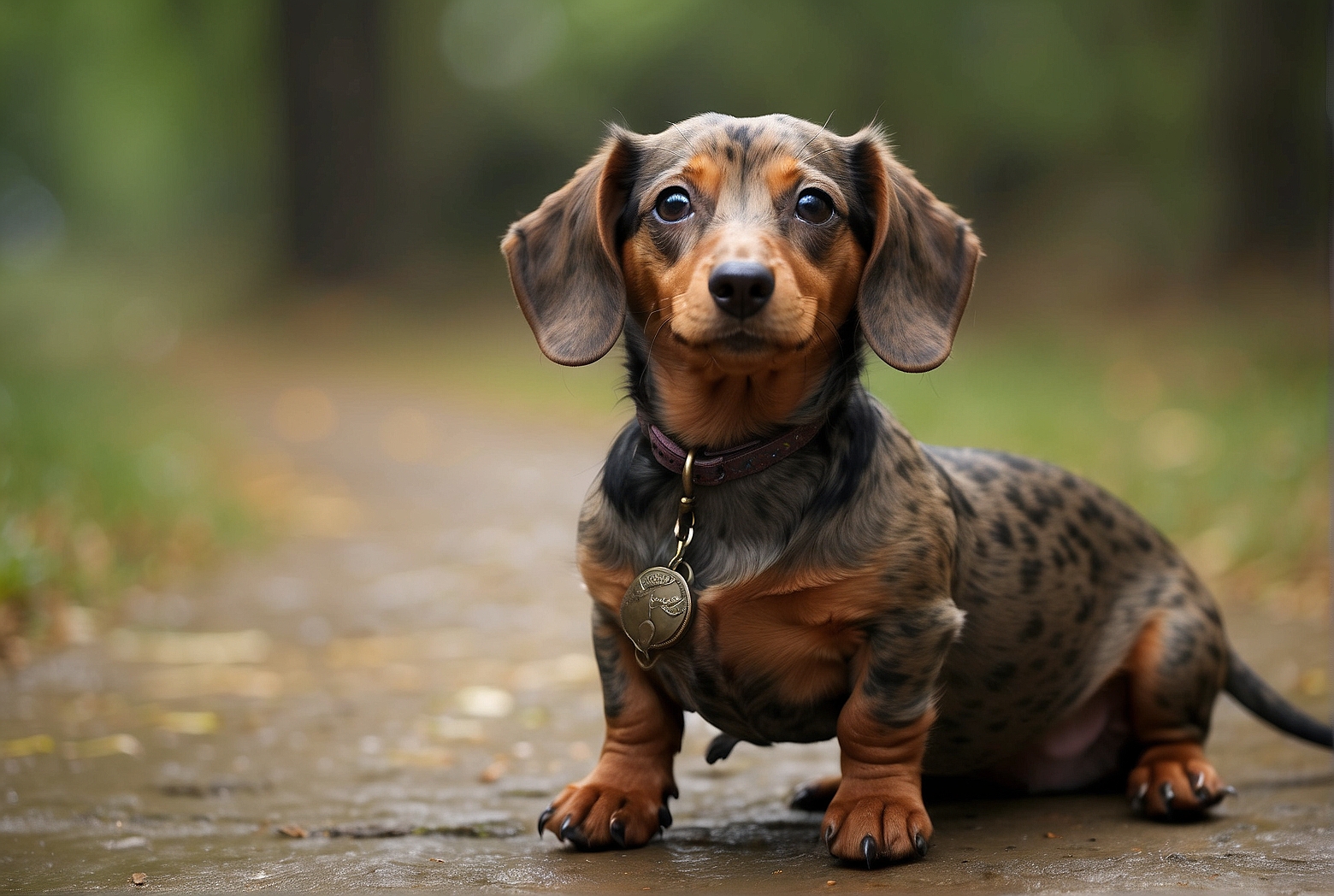
Introduction of Dachshund Breeds in Other Countries
While Dachshunds initially gained popularity as hunting dogs in Germany, their charismatic and affectionate nature quickly captured the hearts of dog lovers worldwide. In the late 19th century, they were introduced to various countries, including the United States, England, and France. Their unique appearance and distinctive hunting abilities made them an instant hit. Soon, Dachshunds became beloved pets and were also used for other purposes, such as tracking, retrieving, and participating in dog shows.
Notable Roles of Dachshunds Throughout History
Throughout history, Dachshunds have been more than just family companions and hunting dogs. These remarkable creatures have also played notable roles in various domains. During World War I, the loyalty and intelligence of Dachshunds were utilized on the battlefield as messenger dogs. Their small size and agility allowed them to navigate challenging terrains and deliver vital messages between troops. Additionally, their keen sense of smell and tracking abilities were utilized in search and rescue operations.
Physical Characteristics of Dachshund Breeds
Dachshunds possess a set of unique physical characteristics that distinguish them from other breeds. From their elongated bodies to their distinctive facial features, there is no denying their charm and individuality.
Unique Body Shape and Size
One of the most recognizable features of Dachshunds is their elongated body. Their long spine, supported by muscular shoulders and hindquarters, contributes to their exceptional agility and maneuverability. Dachshunds come in three different sizes: standard, miniature, and toy. The standard Dachshund typically weighs between 16 and 32 pounds (7-14 kg), while the miniature Dachshund weighs around 11 pounds (5 kg), and the toy Dachshund weighs under 8 pounds (3.5 kg). Despite their size differences, all Dachshunds share the same charming physical attributes.
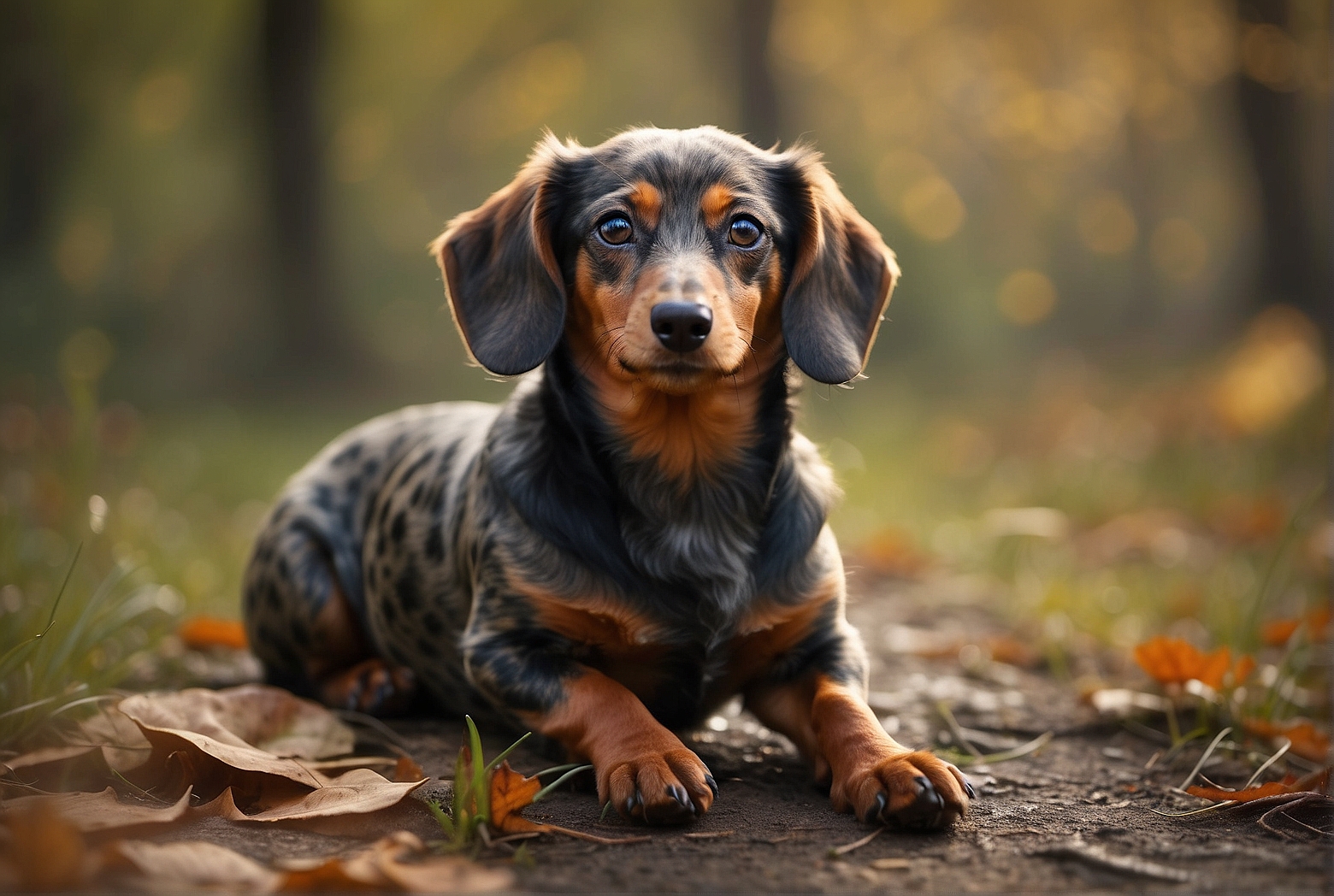
Variations in Coat Types and Colors
Dachshunds boast a variety of coat types, each with its own distinct appeal. The three main coat types are smooth, wirehaired, and longhaired. Smooth-coated Dachshunds have a sleek and glossy coat that requires minimal grooming. Wirehaired Dachshunds have a coarse and dense coat that provides extra protection against harsh weather conditions. Longhaired Dachshunds flaunt a soft and flowing coat that adds elegance to their appearance. In terms of colors, Dachshunds come in various shades, including red, black and tan, chocolate and tan, and dappled patterns.
Distinctive Facial Features
Dachshunds are known for their endearing facial features, which contribute to their adorable and expressive expressions. Their long snouts, paired with dark oval-shaped eyes, exude intelligence and curiosity. Dachshunds also possess long, droopy ears that enhance their hearing capabilities and add a touch of charm to their overall look. Their well-defined jaws and strong teeth make them excellent chewers, a characteristic that stems from their hunting background.
Muscular Structure and Agility
Despite their seemingly unconventional body shape, Dachshunds possess remarkable muscular structure and agility. Their short legs, paired with strong bones and well-developed chests, allow them to navigate challenging terrains and maneuver through narrow spaces with great ease. Dachshunds’ compact body and powerful hindquarters provide them with efficient propulsion, allowing them to accomplish impressive feats in the field and during playtime.
Temperament of Dachshund Breeds
Beyond their distinctive physical attributes, Dachshunds are known for their unique temperament. Understanding their personality traits is crucial in ensuring a harmonious and fulfilling relationship.
Independent and Determined Nature
Dachshunds are renowned for their independent and determined nature. Bred to flush out badgers from their dens, they possess an unwavering determination to accomplish their goals. This characteristic often manifests in their everyday life, where Dachshunds may display a strong willfulness and a desire to pursue their own agendas. While this independent streak can be endearing, it also requires patient and consistent training to establish boundaries and ensure a well-behaved companion.
Intelligence and Trainability
Dachshunds are highly intelligent dogs, capable of learning and adapting to various tasks and commands. Their keen intelligence combines with their strong problem-solving skills, making them quick learners. However, their independent nature can sometimes make training a challenge. Consistent and positive reinforcement techniques are essential in establishing a strong bond and ensuring that your Dachshund understands expectations and commands.
Alertness and Protective Instincts
Dachshunds possess a strong sense of alertness and an inherent protective instinct. Due to their history as hunting dogs, they have a heightened awareness of their surroundings and are quick to notify their owners of any potential threats. Dachshunds’ alertness makes them excellent watchdogs, as they will readily sound the alarm if they sense anything amiss. However, proper socialization is crucial to ensure that their protective instincts remain balanced and controlled.
Sociability and Compatibility with Children and Other Pets
Contrary to popular belief, Dachshunds are generally sociable and enjoy the company of humans and other animals. Their affectionate and loyal nature makes them excellent family pets, and they often form close bonds with their owners. Dachshunds do well with children, provided that interactions are supervised and respectful. With proper socialization from an early age, they can also coexist harmoniously with other pets, including cats and smaller dogs. Introducing new pets gradually and positively is key to fostering a peaceful and friendly environment for your Dachshund and other furry companions.
Types of Dachshund Breeds
Dachshunds come in various types, each with its own unique characteristics and appeal. Let’s explore the different types of Dachshunds and what sets them apart.
Standard Dachshund
The standard Dachshund is the original and most well-known type of Dachshund. They have a weight range of 16 to 32 pounds (7-14 kg) and a height of approximately 8 to 9 inches (20-23 cm) at the shoulder. Standard Dachshunds are versatile and excel in various roles, including hunting, tracking, and being loving family companions.
Miniature Dachshund
As the name suggests, miniature Dachshunds are smaller versions of the standard Dachshunds. Weighing around 11 pounds (5 kg), they possess the same elongated body and distinctive features, but in a more compact package. Miniature Dachshunds are adored for their playful and outgoing nature, making them ideal companions for individuals or families living in smaller homes or apartments.
Toy Dachshund
The toy Dachshund is the smallest of the Dachshund breeds, weighing under 8 pounds (3.5 kg). They are incredibly tiny and delicate, often resembling living stuffed animals. Toy Dachshunds bring joy and companionship to their owners, especially those looking for a portable and adorable canine companion.
Wirehaired Dachshund
The wirehaired Dachshund boasts a dense and wiry coat that sets it apart from other Dachshund breeds. This distinct coat type provides additional protection against harsh weather conditions and gives them a rugged and charming appearance. Wirehaired Dachshunds share the same characteristics as other Dachshunds but with the added benefit of a weather-resistant coat.
Longhaired Dachshund
Longhaired Dachshunds have a soft and flowing coat that adds elegance and grace to their appearance. Their beautiful, silky fur requires regular grooming to maintain its lustrous sheen. Longhaired Dachshunds possess the same loving and spirited nature as other Dachshunds, making them wonderful companions for those who appreciate their stunning coat.
Common Health Issues in Dachshund Breeds
While Dachshunds are generally healthy and hardy dogs, they are prone to certain health conditions. Understanding these common health issues will help you provide the best possible care for your Dachshund.
Spinal Problems and Intervertebral Disc Disease
One of the most prevalent health issues in Dachshunds is related to their unique body shape and elongated spine. Their long bodies put them at a higher risk for spinal problems, such as intervertebral disc disease (IVDD). IVDD occurs when the discs between the vertebrae in the spine bulge or rupture, causing pain and mobility issues. Regular exercise, maintaining a healthy weight, and avoiding rigorous activities that strain the back can help reduce the risk of spinal problems.
Obesity and Related Health Complications
Due to their love for food and treats, Dachshunds can be prone to obesity if their diet and exercise are not well-regulated. Obesity can put additional stress on the spine and joints, exacerbating the risk of spinal issues. It can also lead to various health complications, such as diabetes, heart disease, and respiratory problems. Providing a balanced and portion-controlled diet, along with regular exercise, is crucial in preventing obesity and maintaining a healthy weight for your Dachshund.
Heart Conditions and Blood Disorders
Dachshunds are susceptible to certain heart conditions, including mitral valve disease, which affects the heart’s ability to pump blood efficiently. Regular veterinary check-ups, including cardiac evaluations, can help detect and manage any underlying heart conditions early. Additionally, Dachshunds are prone to specific blood disorders, such as von Willebrand disease, which affects the blood’s ability to clot properly. Familiarize yourself with the potential health risks and consult your veterinarian for appropriate preventive measures and treatments.
Eye and Ear Problems
Dachshunds, particularly those with long and droopy ears, are predisposed to ear infections. Their ears provide a warm and moist environment that is conducive to bacterial and fungal growth. Regular cleaning and proper ear care are essential in preventing ear infections. Additionally, Dachshunds are prone to several eye conditions, including cataracts, glaucoma, and progressive retinal atrophy. Routine eye examinations by a veterinarian will help identify and address any potential eye issues early on.
Genetic Conditions and Predispositions
As with many purebred dogs, Dachshunds may inherit certain genetic conditions and predispositions. These can include hip dysplasia, patellar luxation, and various neurological disorders. Responsible breeding practices, including health testing of parent dogs, can help minimize the incidence of genetic conditions. When selecting a Dachshund, it is crucial to obtain a puppy from reputable breeders who prioritize the health and well-being of their breeding dogs.
Dachshund Breeds in Popular Culture
Dachshunds have made their mark in popular culture, captivating people’s hearts and gracing various forms of media. From movies and television shows to literature and social media, Dachshunds have become beloved icons in the entertainment industry and beyond.
Movies and Television Shows featuring Dachshunds
Dachshunds have been featured in numerous movies and television shows, bringing their charm and delightful antics to the screen. Whether it’s the endearing Dachshund duo in “Lady and the Tramp” or the adventurous “Slinky Dog” in the “Toy Story” franchise, these unforgettable characters have solidified Dachshunds’ place in cinematic history. Dachshunds’ distinct appearance and animated personalities make them perfect candidates for starring roles in both live-action and animated projects.
Dachshunds in Literature
Dachshunds have also found a place in literature, capturing the hearts of readers through their endearing tales. From “The Story of Edgar Sawtelle” by David Wroblewski to “The One Hundred and One Dalmatians” by Dodie Smith, Dachshunds have graced the pages of some of the most cherished books of all time. Their portrayal in literature often emphasizes their loyalty, resilience, and the unbreakable bond they form with their human companions.
Dachshunds as Mascots or Logos
Dachshunds have become iconic mascots and logos for various brands and organizations. Their distinct silhouette and recognizable features make them excellent representatives for businesses and products. Whether it’s a famous hot dog chain or a quirky logo, the Dachshund’s unique appearance is often leveraged to convey a sense of familiarity, charm, and reliability.
Dachshund Events and Competitions
Dachshund enthusiasts worldwide come together to celebrate their beloved breed through various events and competitions. Annual Dachshund races, often referred to as “Wiener Dog Races,” attract crowds of spectators eager to witness these spirited canines sprint towards the finish line. Dachshund parades, shows, and gatherings provide opportunities for Dachshund lovers to share their passion, connect with fellow enthusiasts, and showcase the beauty and talents of their pets.
Dachshund Influencers on Social Media
In the age of social media, Dachshunds have found their place as influential and beloved stars of various online platforms. Dachshund influencers on platforms such as Instagram and YouTube have amassed large followings, mesmerizing fans with their adorable photos, heartwarming videos, and engaging personalities. These furry social media stars have become ambassadors for the Dachshund breed, spreading joy and promoting the unique qualities of these captivating dogs.
Training and Exercise Needs of Dachshund Breeds
Training and exercise play crucial roles in ensuring the overall well-being and fulfillment of Dachshunds. Understanding their specific needs and providing appropriate opportunities for mental and physical stimulation is key to fostering a happy and well-rounded companion.
Importance of Early Socialization and Obedience Training
Early socialization and obedience training are vital for Dachshunds to develop good behavior, adaptability, and proper manners. Exposing them to various environments, people, animals, and experiences from a young age helps them grow into confident and well-adjusted adults. Obedience training is essential in establishing a strong foundation of commands, boundaries, and respect between you and your Dachshund. Consistency, positive reinforcement, and patience are key when training these intelligent and independent dogs.
Challenges and Tips for Housebreaking
Housebreaking can be a challenge for Dachshund owners, as they may be stubborn and possess a strong will. Establishing a consistent routine with designated potty areas, positive reinforcement, and patience is crucial in successfully housebreaking your Dachshund puppy. Employing crate training can also be beneficial to prevent accidents and create a secure and comfortable space for your Dachshund.
Ideal Exercise Routine for Dachshunds
While Dachshunds may have short legs, they still require regular exercise to maintain a healthy weight and ensure mental stimulation. Daily walks, play sessions, and interactive toys are excellent ways to satisfy their exercise needs. However, it’s important to avoid activities that place excessive strain on their backs, such as jumping from heights or participating in high-impact sports. Consult with your veterinarian for personalized exercise recommendations based on your Dachshund’s age, health, and fitness level.
Mental Stimulation and Enrichment Activities
Dachshunds thrive on mental stimulation, as it helps to prevent boredom and destructive behaviors. Engage your Dachshund’s mind through puzzle toys, treat-dispensing toys, and interactive games that challenge their problem-solving skills. Training sessions that incorporate commands and tricks not only provide mental stimulation but also strengthen the bond between you and your Dachshund.
Grooming and Maintenance of Dachshund Breeds
Proper grooming and maintenance are essential to keep your Dachshund looking and feeling their best. From coat care to dental hygiene, a regular grooming routine ensures that your Dachshund remains healthy and comfortable.
Coat Care and Brushing Requirements
The specific coat type of your Dachshund determines the grooming needs. Smooth-coated Dachshunds require minimal grooming, with occasional brushing to remove loose hair and distribute the natural oils in their coat. Wirehaired Dachshunds, on the other hand, require regular hand-stripping or professional trimming to maintain the texture and appearance of their wiry coat. Longhaired Dachshunds require daily brushing to prevent tangles and matting, paying extra attention to the feathering on their ears and tail.
Bathing and Drying Techniques
Bathing your Dachshund should be done on an as-needed basis, aiming for every 6 to 8 weeks or when they become dirty or smelly. Use a mild, dog-specific shampoo and ensure that the water temperature is lukewarm. Thoroughly rinse out all the shampoo to prevent any skin irritations. After bathing, gently pat your Dachshund dry with a towel or use a hairdryer on low heat, ensuring that it is a comfortable temperature for your dog. Take care to dry the areas between the folds of their skin, especially for longhaired Dachshunds.
Nail Trimming and Dental Care
Regular nail trimming is essential to prevent overgrowth, discomfort, and potential injuries. Dachshunds have small, delicate nails that should be trimmed carefully, avoiding cutting too close to the quick. If you’re unsure or uncomfortable with nail trimming, seek assistance from a professional groomer or veterinarian. Additionally, dental care is crucial for maintaining your Dachshund’s oral health. Regular brushing with dog-specific toothpaste and dental chews can help prevent dental diseases and keep their teeth clean and strong.
Ear Cleaning and Eye Care
Dachshunds, especially those with long or droopy ears, are prone to ear infections and wax buildup. Conduct a weekly ear examination and gently clean their ears with a veterinarian-recommended ear cleaner when necessary. Be cautious not to insert anything deep into their ear canals, as this can cause injury. Additionally, regular eye cleaning is important to remove any discharge and prevent tear staining. Use a clean, damp cloth or a veterinarian-recommended eye cleaning solution to wipe the area around their eyes, ensuring that it is done gently and without causing discomfort.
Professional Grooming and Maintenance Services
While regular home grooming is essential, some Dachshund owners may prefer to enlist the help of professional groomers for certain tasks, such as wirehaired Dachshund trimming or specialized grooming techniques. Professional groomers have the knowledge and expertise to ensure that your Dachshund’s grooming needs are met effectively and safely. Regular visits to a professional groomer can help address specific breed-related grooming requirements and maintain your Dachshund’s overall hygiene.
Choosing a Dachshund Breed as a Pet
Bringing a Dachshund into your home is a significant decision that requires careful consideration of various factors. Understanding what it takes to care for a Dachshund will help you determine if they are the right fit for you and your lifestyle.
Suitable Living Environment and Space
Dachshunds are adaptable and can thrive in various living environments, including apartments, houses, or rural areas. However, they do require sufficient space for exercise and exploring. A securely fenced yard allows them to roam safely and burn off their energy. If you live in an apartment or have limited outdoor space, ensuring regular exercise through walks and play sessions is crucial to keep your Dachshund happy and healthy.
Compatibility with Owner’s Lifestyle and Activity Level
Dachshunds are generally adaptable to their owners’ lifestyles, but it is important to assess your activity level and availability to provide for their exercise and mental stimulation needs. Dachshunds do enjoy active playtime and walks, but they also appreciate relaxing and snuggling with their owners. If you lead a more sedentary lifestyle or have limited time for daily exercise, a Dachshund may still be a suitable companion as long as their exercise needs are met through alternative means, such as puzzle toys or interactive games.
Allergies and Sensitivities
Dachshunds are not hypoallergenic dogs and can still produce allergens that may trigger allergies in sensitive individuals. If you or a family member have allergies, it is advisable to spend time with Dachshunds to determine if any allergic reactions occur. Regular grooming, including brushing and bathing, can help reduce dander and allergens, but it may not eliminate the risk entirely.
Financial Considerations
Owning a Dachshund involves financial responsibilities, including food, veterinary care, grooming, and various other supplies. Their potential health issues, particularly spinal problems and related treatments, should also be taken into account. Ensure that you are financially prepared to provide for your Dachshund’s needs throughout their lifetime.
Responsibilities and Commitment
Dachshunds are sociable and affectionate companions that require love, attention, and daily care. Providing a safe and nurturing environment, regular exercise, mental enrichment, and social interaction is essential. Dachshunds may have a lifespan of 12 to 16 years or more, so owning a Dachshund is a long-term commitment that requires dedicated love and care throughout their lives.
Conclusion and Final Thoughts on Dachshund Breeds
In conclusion, Dachshund breeds have a rich history, distinctive physical characteristics, unique temperament, and a prominent place in popular culture. Their journey from German badger hunters to beloved family companions and iconic mascots is a testament to their exceptional qualities and enduring appeal. Caring for a Dachshund involves understanding their specific needs, providing proper training, exercise, grooming, and love. With the right care and attention, a Dachshund can become a loyal and cherished member of your family, bringing joy, laughter, and endless love into your life.

